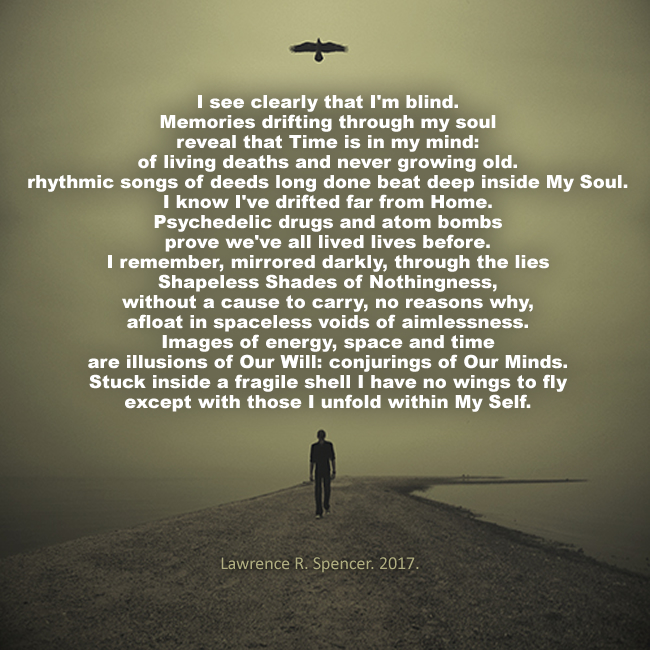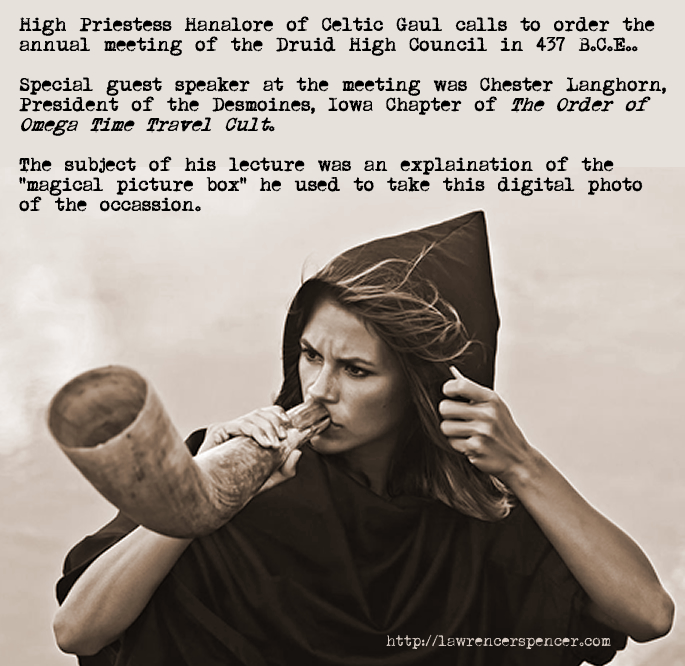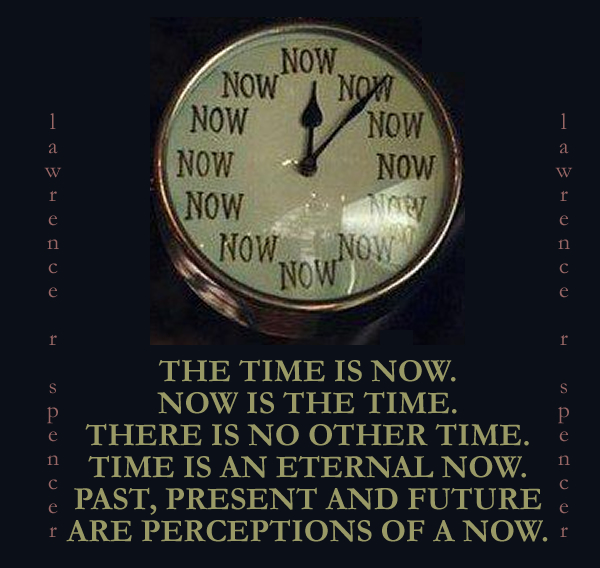Republished by Blog Post Promoter
Category Archives: ORDER OF OMEGA TIME TRAVEL CULT
TEMPLE OF TEMPESTAS
Republished by Blog Post Promoter
HIGH PRIESTESS HANALORE OF CELTIC GAUL
Republished by Blog Post Promoter
High Priestess Hanalore of Celtic Gaul calls to order the annual meeting of the Druid High Council in 437 B.C.E.. Special guest speaker at the meeting was Chester Langhorn, President of the Desmoines, Iowa Chapter of The Order of Omega Time Travel Cult. The subject of his lecture was an explaination of the “magical picture box” he used to take this digital photo of the occassion.
TIME IS NOW
Republished by Blog Post Promoter
This Message is Brought to You as A Public Service Announcement by:
ILLUSIONS OF OUR WILL
Republished by Blog Post Promoter
 I see clearly that I’m blind.
I see clearly that I’m blind.
Memories drifting through my soul
reveal that Time is in my mind:
of living deaths and never growing old.
rhythmic songs of deeds long done beat deep inside My Soul.
I know I’ve drifted far from Home.
Psychedelic drugs and atom bombs
prove we’ve all lived lives before.
I remember, mirrored darkly, through the lies
Shapeless Shades of Nothingness,
without a cause to carry, no reasons why,
afloat in spaceless voids of aimlessness.
Images of energy, space and time
are illusions of Our Will: conjurings of Our Minds.
Stuck inside a fragile shell I have no wings to fly
except with those I unfold within My Self.
— Lawrence R. Spencer. 2017. —





